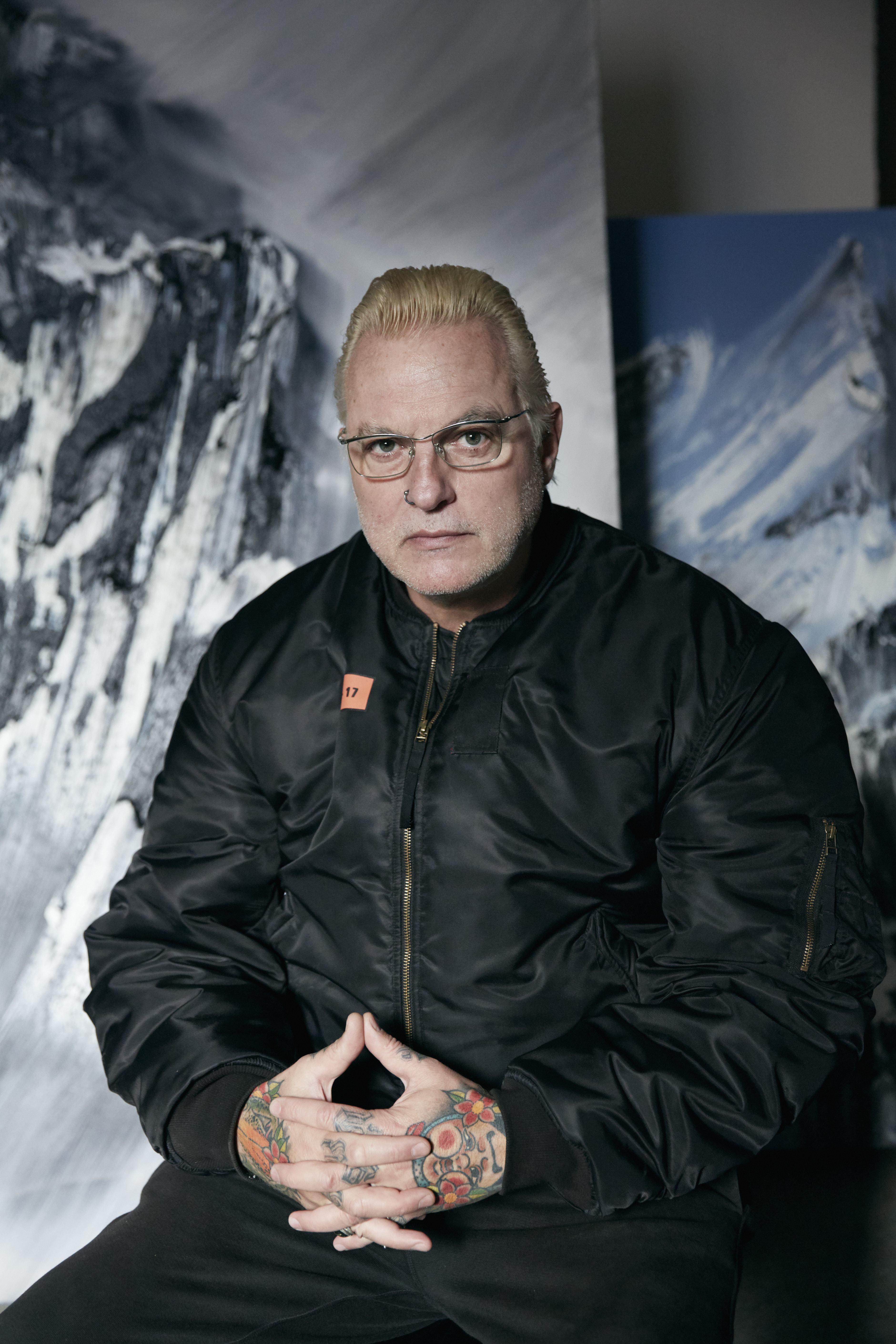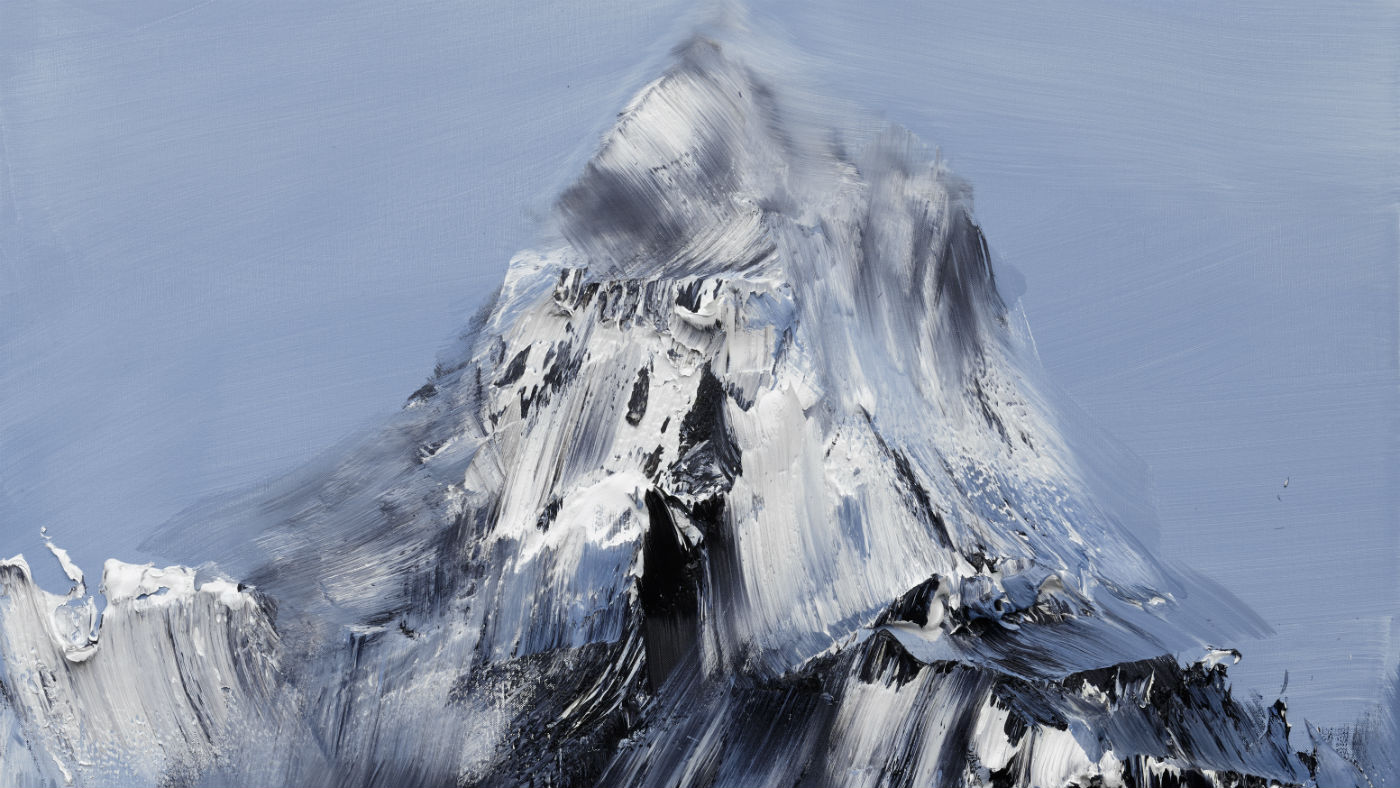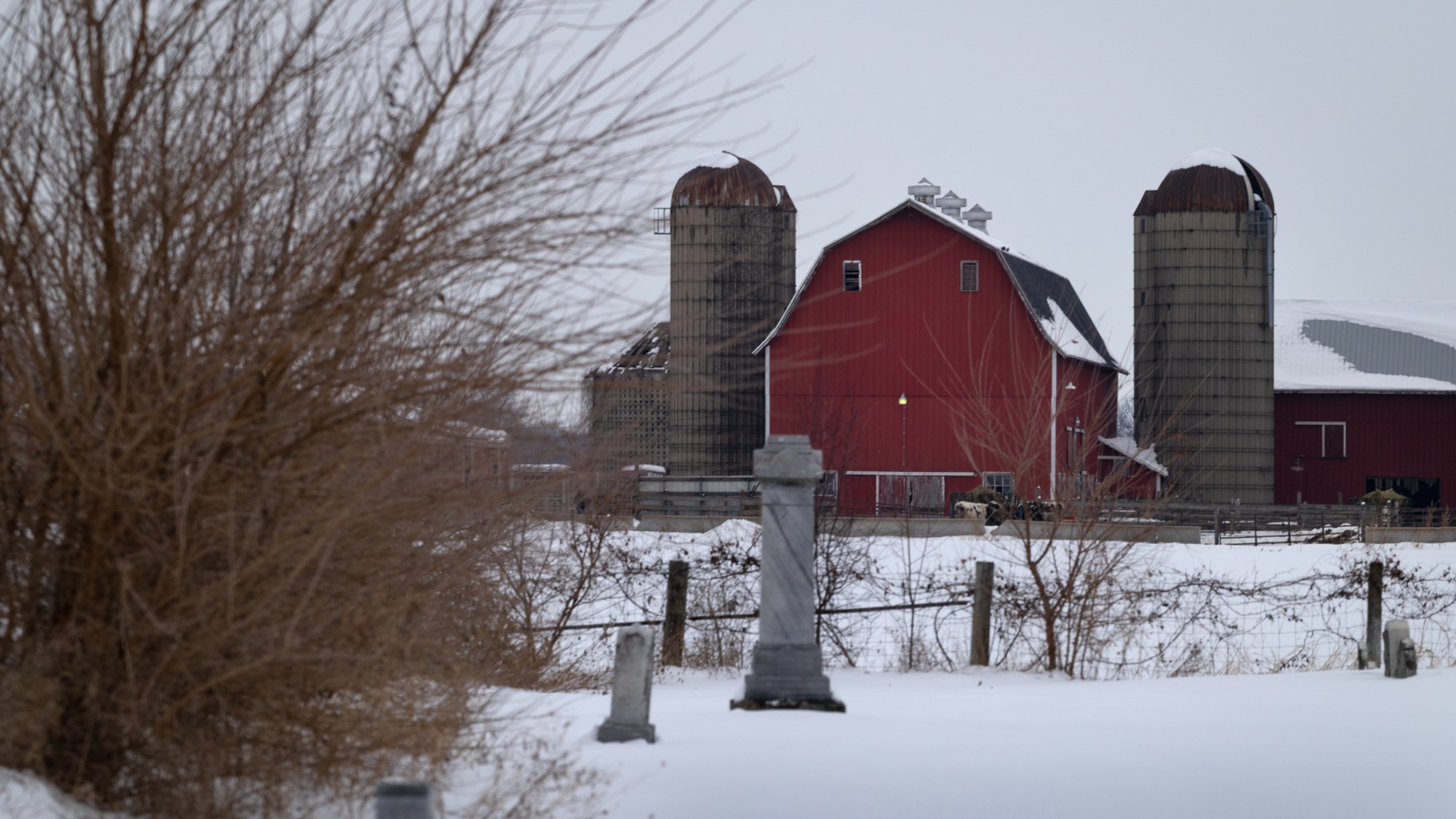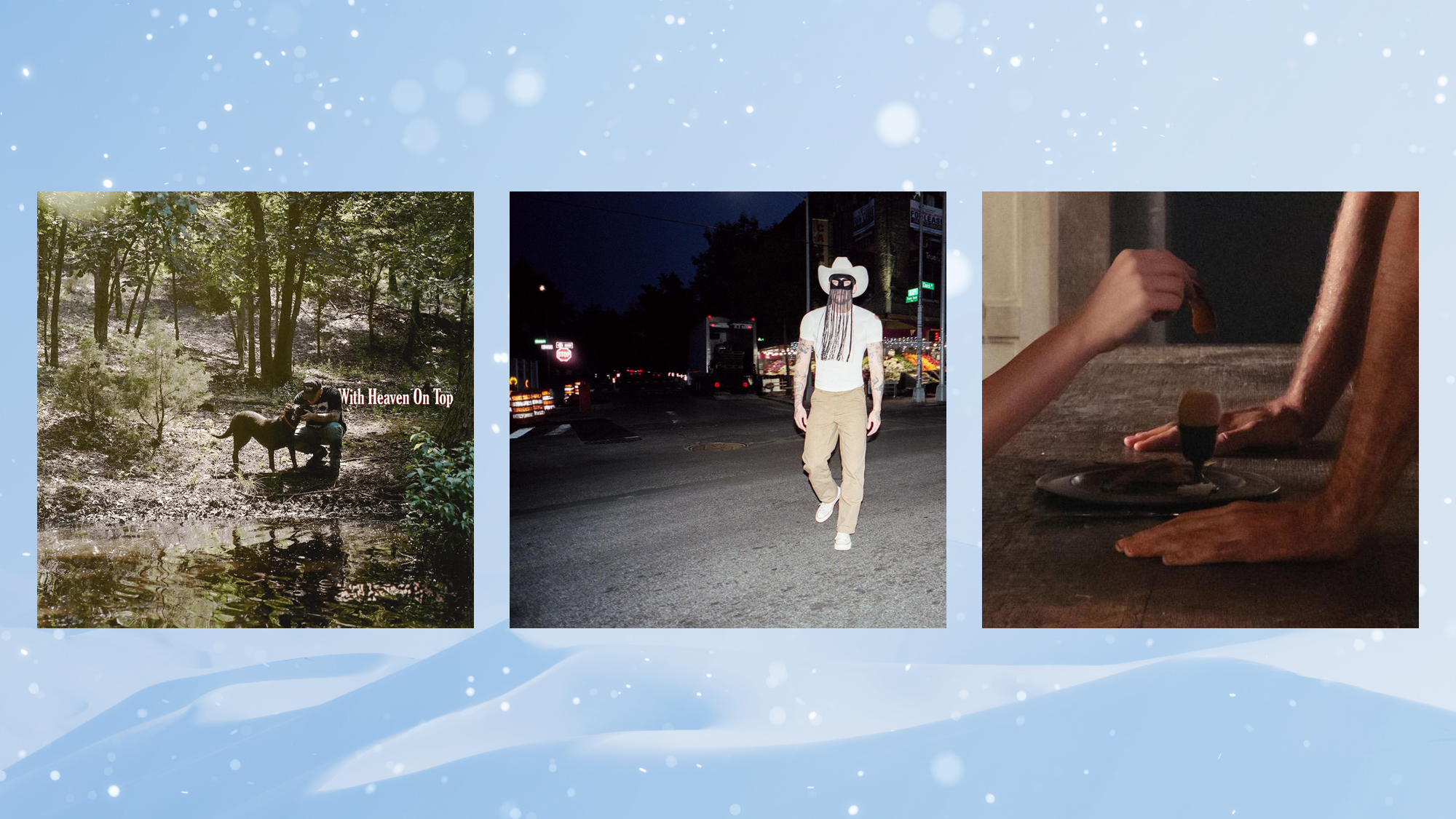Conrad Jon Godly interview: To See Is Not To Speak
Swiss oil painter on the influences behind his first ever solo UK exhibition

Fashion photographer turned artist Conrad Jon Gody’s awe-inspiring and atmospheric depictions of nature have won him admirers across the world.
The Swiss artist’s upcoming London show, To See Is Not To Speak, will mark the first time he has exhibited his work in the UK.
The oil on canvas paintings selected for the showcase “address the relationship between nature and the sublime”, and are heavily influenced by the mountainous landscape of his homeland.
The Week
Escape your echo chamber. Get the facts behind the news, plus analysis from multiple perspectives.

Sign up for The Week's Free Newsletters
From our morning news briefing to a weekly Good News Newsletter, get the best of The Week delivered directly to your inbox.
From our morning news briefing to a weekly Good News Newsletter, get the best of The Week delivered directly to your inbox.
The Week Portfolio spoke to Godly about his artistic philosophy, his influences and his plans for the future.

Your work, you have said in the past, raises the questions "What is the essence of a mountain? What is light? How does reflection work on snow?" What are your answers to those three questions?
It's not easy to decide what's the essence of a mountain, but I would say that mountains have the capacity to make people reflect about their own existence and to make them feel how tiny and how helpless they are compare to the immense power of a mountain, compared to nature in general.
Someone who spends time in the mountains will experience that certain problems will disappear when they spend enough time in the mountains.
A free daily email with the biggest news stories of the day – and the best features from TheWeek.com
Mountains are never the same even they stand for eternity. They change day by day - once they can be frightening, and another day they can unfold pre beauty and lightness. That's what is so fascinating!
To understand light is essential when you paint. Since I was working many years as a photographer, I know a lot about light and I can profit from this as a painter.
Light and shadow are responsible for a certain deepness in a painting as long it's not a total abstract or graphic painting.
Reflection on something very white as snow entails that the white gets even more blinding. When you stand in front of one of my large SOL [Sun] works you almost need to blink and you're wishing to wear sunglasses.

The title of your exhibition alludes to the idea that pictures can sometimes be more powerful than words. Is that your view, and if so why do you think that?
Of course it's depending from who the words are coming from! But yes, I think that pictures can be more powerful than words.
Why?
Maybe because they don't lie? Apart from manipulated photos, of course. A good painting can be a poem without words and a good poem can be a painting with words.
Why are you especially interested in mountains?
I am not especially interested in mountains, that's a misconception. Where I live I am surrounded by mountains and they have a huge impact on me as a human and as a painter. Since I am very much interested in the power of nature and since nature is the source for my paintings, it was very clear for me that I will also paint mountains.
But I painted also the sea and others. The sea has the same power as the mountains, it can be frightening, it can be delightful or it can open you the way into another world.
I show my works for the first time in a solo exhibition in the UK and I wanted to bring the mountains to Great Britain. For the future I am planning to dive into something new though - I understand painting as a ongoing progress, repetition is standstill.

You used to be a fashion photographer. Are there parallels between the worlds of art and fashion? How are they similar and how are they different?
Regarding the business, the worlds of art and fashion are very similar. Nowadays galleries are very often interested in selling trends. What's trendy sells.
In the last few years art became very fashionable, it's cool to buy art. Today it's not enough to show your work in a white cube - no, people wish to be entertained, they want more than to look at a painting on a white wall.
That's why many galleries started to create synergies to entertain people. Fashion meets art, art meets food and drinks, music meets art, et cetera.
When I speak about myself as a individual in the worlds of art and fashion there is a big difference. As a photographer I used to work with huge teams, assistants, stylists, make-up artists, hair artists, editors etc. but as I painter I work alone in my studio, just me in front of the canvas.
But if you want to have success as an artist you will also need a team, galleries which promote you and sell your work, and then the similarities to the fashion world are obvious.
How has living in Japan impacted your work?
In Japan I learned many things about life and art and how to look at things. Japanese people prefer to look at things very concentrated, without talking and with a lot of time. Only this way you can feel and understand. Doesn't matter if it's about life, nature or art. After you have watched things with enough time or when you have listened carefully, you might have understood and then you can talk about it.
I was deeply impressed experiencing this kind of thinking and it had a huge impact on me as a human and as an artist. My way of painting is full concentration, almost meditation.
Kobayashi Hideo, a famous Japanese writer, wrote in his 1957 book Bi wo motomeru kokoro: “To see is not to speak because words could distract your eyes.” When I was thinking deeply about his words I realised how right he was. I think nowadays people often talk too much, before they take enough time to think and to see things in the right light.
As a painter first I have to know the subject I paint inside out. Only when you totally understand something will you be able to paint it well. People should take enough time just to see, just to look carefully at art before they talk about it.
That's why I chose this title for my upcoming solo show. Maybe some people will understand the true meaning behind this title?

People see similarities between your brush strokes and Japanese calligraphy. Do you see that too? And have you studied calligraphy?
Yes, I see it too. It's a coincidence and nothing I tried to do.
My way of painting developed by painting for years day by day. My style, my signature of painting was already developed before I started to show my work in Japan.
I never studied calligraphy. Personally I think that western people can study calligraphy but that they should never try to be calligraphy painters. It doesn't make sense, that's something which belongs only to Asian artists. Only Asians have the knowledge, the experience and a deep understanding for calligraphy -I would never ever try to do it.
If you couldn't paint, and also couldn't return to being a photographer, what would you do instead?
If I couldn't paint I would never return being a photographer. Painting is my life. Only a major health problem or death could stop me from painting.
To See Is Not To Speak runs at Mayfair’s JD Malat Gallery from Friday 25 January until early March.
Arion McNicoll is a freelance writer at The Week Digital and was previously the UK website’s editor. He has also held senior editorial roles at CNN, The Times and The Sunday Times. Along with his writing work, he co-hosts “Today in History with The Retrospectors”, Rethink Audio’s flagship daily podcast, and is a regular panellist (and occasional stand-in host) on “The Week Unwrapped”. He is also a judge for The Publisher Podcast Awards.
-
 Will Trump’s $12 billion bailout solve the farm crisis?
Will Trump’s $12 billion bailout solve the farm crisis?Today’s Big Question Agriculture sector says it wants trade, not aid
-
 ‘City leaders must recognize its residents as part of its lifeblood’
‘City leaders must recognize its residents as part of its lifeblood’Instant Opinion Opinion, comment and editorials of the day
-
 10 upcoming albums to stream during the winter chill
10 upcoming albums to stream during the winter chillThe Week Recommends As the calendar turns to 2026, check out some new music from your favorite artists